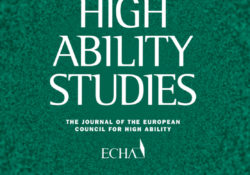tandfonline.com – Gender-fair assessment of young gifted students’ scientific thinking skills
tandfonline.com har udgivet en rapport under søgningen “Teacher Education Mathematics”: ABSTRACT ABSTRACT This paper describes an Israeli national-level research examining the extent to which admissions of elementary school students to the gifted programmes based on standardised tests are gender-fair. In the research, the gifted students consisted of 275 boys, 128 girls, and additional 80 girls who were admitted to the gifted programme through affirmative action (AA). To assess these young students’ scientific thinking skills, also referred to as science practices, open-ended questions of case-based questionnaires were developed. The investigated scientific thinking skills were question posing, explanation, graphing, inquiry, and metacognition. Analysis of the students’ responses revealed that gifted girls who entered the programmes through AA performed at the same level as the other gifted students. We found significant differences between… Continue Reading

